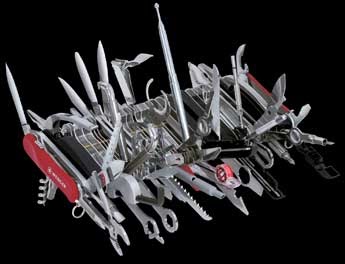Pioneer said:
- with it's original one-man turret, cannon and most sadly it's troop carry number rearanged to facilitate yet another Army change of specifications and wants
Not quite as simple as that but basically yes. The reduction in troops was to fit in the two man turret and TOW missiles. Which was a brilliant move. The effectiveness of an infantry battalion to resist a Soviet tank attack was significantly increased by the Bradley’s turret at the loss of a not so significant 100 or so bayonets.
It is possible to fit an ATGM with one man turret, see bmp-1
The IFV concept really took a dramatic turn with two man turret with turret baskets, gun stabilization and advanced sensors that reduced infantry capability and significantly increased the price.
In some sense the IFV debate is a long one with many variables poorly pinned down to allow continued arguments around. A example would be lastdingos pitch:
This is blog about the defence against external threats and about the defence of civil liberties.

defense-and-freedom.blogspot.com
------------------
With the use case of IFVs spanning maneuver under nuclear exchanges to door knock raid on militants across five decades of technology it is unlikely a single generalization can sum up optimal design.
The question of IFV is really a proxy debate on infantry in combined arms, whose roles has both been changing and hard to understand especially to amateur weapon watchers.
Secondly is that the Bradley was designed without enough armour. This is the most ridiculous of arguments and also the one with the most mileage. The Bradley was designed to be resistant to splinters from nearby bursts of 152mm high explosive shells and hits from 14.5mm armour piercing bullets fired by Soviet heavy machineguns.,,. It is this closing with the enemy on the battlefield that exposes an APC to the fires of anti-tank weapons like the RPG or BMP’s 73mm gun. Weapons that are not effective at long range. Also the APC didn’t have to worry about long range anti-tank weapons like guided missiles or enemy tank guns because it was never to remain stationary while exposed to enemy direct fires like a tank does. However the type of suppressive fires they would face are artillery barrages and long range machinegun fires.
That is merely one conceptualization of the IFV. Other thinkers wanted the IFV to do different things, even in a linear battle.
There is dismount out of small arms range: the slowest method that exposes infantry to small arms and artillery the most but demands the least on the transport vehicle. This is the typical concept for APCs.
Then there is dismount out of RPG range, which speeds up the assault and protects the infantry from artillery and small arms all but the last 300m. ATGM is to be suppressed by fire and smoke. This is the typical concept for IFVs.
Then there is those that propose closing to near hand grenade range before dismount, exposing the infantry the least amount of time to small arms and artillery and maintaining the fastest tempo of attack with greatest shock effect but demand near MBT levels of protection.
There are also thinkers that believe ATGM-like weapons can not be adequately negated with high density of light ATGMs like Eryx or NLAW, AT7 possible, demanding again, MBT like protection for infantry assault carriers. Of course, whether to protect "Tanks" against ATGM was not set in stone either, with vehicles like Leo1 and AMX30. Composite armor means it is somewhat more feasible but it is unclear whether the offense-defense arms race favor the tank builders (against opponent that have a missile industry that can respond to new armor).
Then there is soviets that simply do not attempt to armor against heavier weapons and focus on maximizing mobility, firepower and volume. The BMP-1 actually attempted to make the IFV an anti-tank vehicle with ATGM/Grom (with only HEAT and no HE ammo in early iterations) in the belief in massed armored clash in Germany, with infantry tasks being a sideshow.
Then there are people that want symmetric overmatch and demand armor overmatch on opponent IFVs.
Then there is the assumption of linearity in a Germanic clash with historically unparalleled mobility on all sides with a potential dash of nuclear weapons. It is also questionable how much importance is infantry in open field defense lines (as to demand sophisticate equipment to counter) when fully mechanized armies with historically unparalleled firepower is fighting.
The original cold war mission was never validated and there is much speculation on what would have happened but not sufficient proof.
---
In the post cold war environment, infantry do not assault anyways, but instead pin and kill the opponent with fires. This with shifting expectation on infantry losses means a completely different set of requirements.


